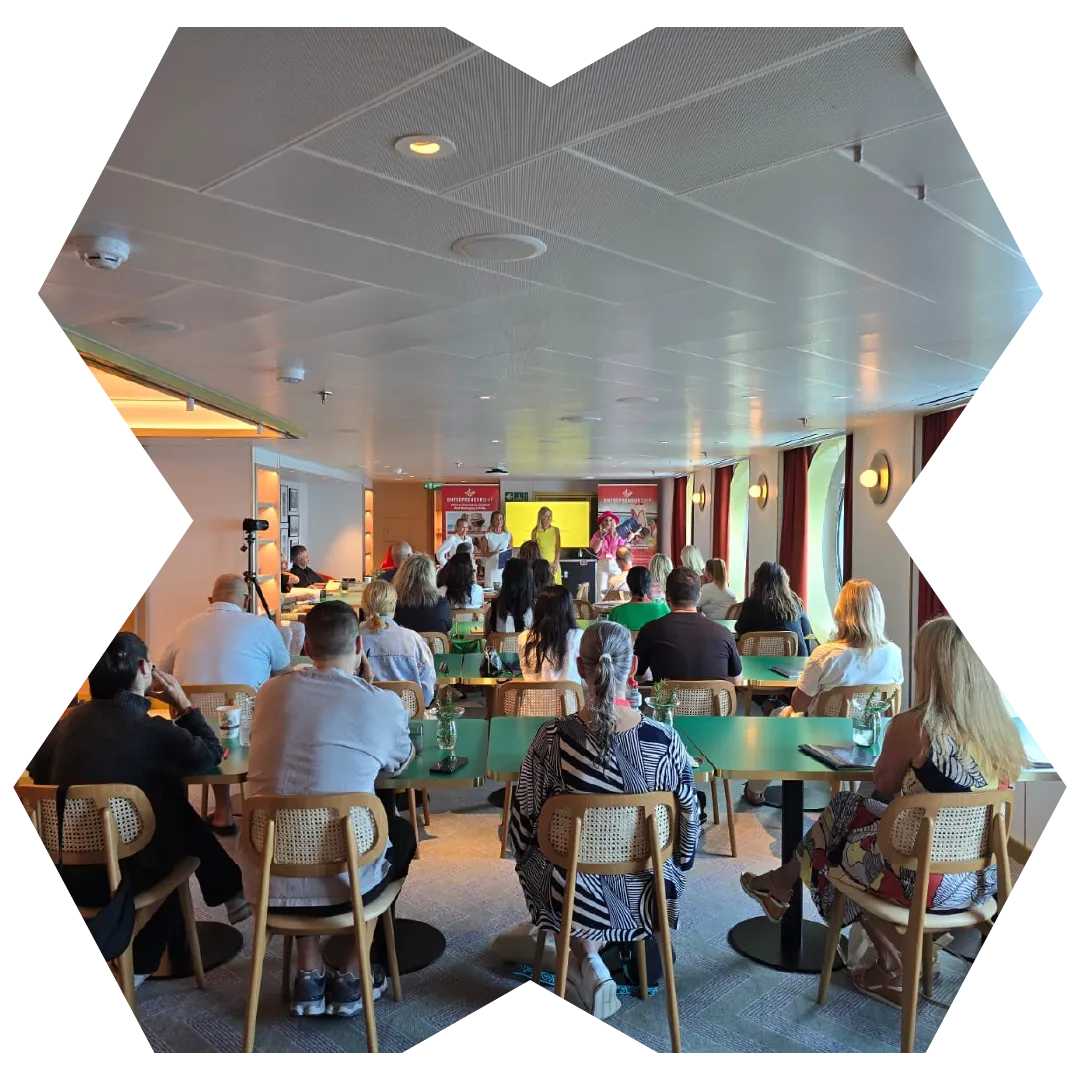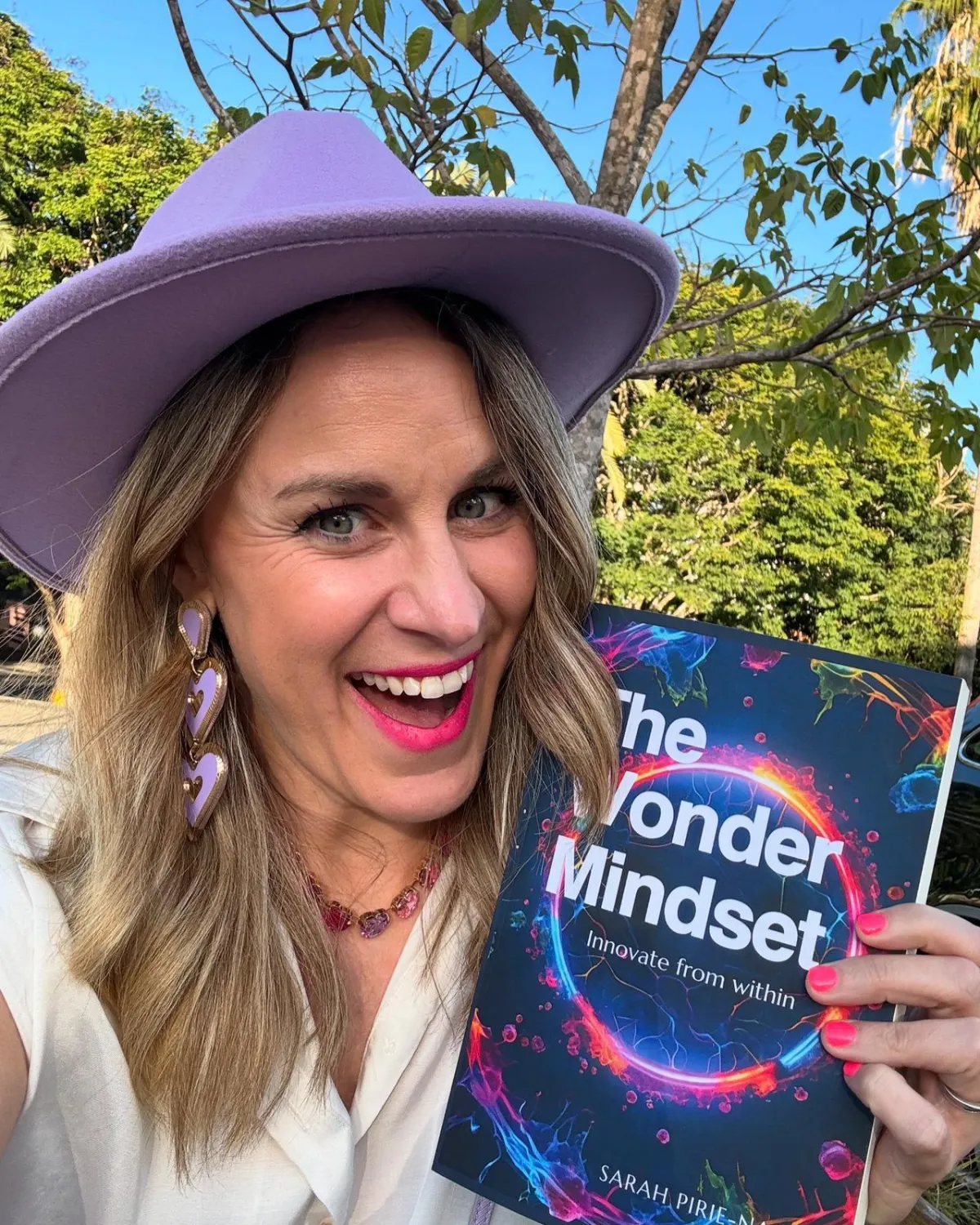DISCOVER SELF,
Evolve Together

DISCOVER SELF,
Evolve Together
Be part of a vibrant ecosystem where you can connect with like-minded individuals, learn from experts, and grow personally and professionally.


We are here to help you create a life and business by design
Our mission is to empower you to evolve and thrive, and we're committed to breaking down barriers and fostering a sense of belonging. We are radically inclusive, and put family and community first as we believe community learning is a positive frame for the future, and designing radically inclusive experiences that involve families, are the way forward.
35K+ Customers
214+ Mentions
25+ years of experience
Our Services
Connections are our jam, we can't wait to connect you with ideas, services solutions that will help you EVOLVE.


MASTERMIND


BUSINESS


EXPERIENCES


FAMILIES
Our 12 Month Mastermind is a blend of Personal and Professional Development for You AND Your Family. We know that when we discover together, we evolve together
Our frameworks and philosophies are able to be applied in micro businesses to scale-ups and enterprises.
From Antarctica to Uluru we have incredible travel experiences that are designed with Personal and Professional Development at the core. Discover yourself while exploring this incredible planet of ours.
From Family Retreats to Family Mastermind, Our Families Thread is all about investing in what matters most so these precious years don't pass you by.
Our Services
Connections are our jam, we can't wait to connect you with ideas, services solutions that will help you EVOLVE.


MASTERMIND
Our 12 Month Mastermind is a blend of Personal and Professional Development for You AND Your Family. We know that when we discover together, we evolve together


BUSINESS
Our frameworks and philosophies are able to be applied in micro businesses to scale-ups and enterprises.


EXPERIENCES
From Antarctica to Uluru we have incredible travel experiences that are designed with Personal and Professional Development at the core. Discover yourself while exploring this incredible planet of ours.


FAMILIES
From Family Retreats to Family Mastermind, Our Families Thread is all about investing in what matters most so these precious years don't pass you by.
WANT THE
LEGAL JARGON?
Know how we use your info, your rights and
what you are signing up for!

Communities We Created
We have 20 years experience producing retreats, experience and events to form communities from team days for 5 people to audiences of 3,000. Over 30,000 people have experienced a life changing experience that we had the pleasure of designing.
News & Stories

Whitepaper: Burnout: Understanding Causes, Impacts, and Interventions in Australia and New Zealand
Burnout: Understanding Causes, Impacts, and Interventions in Australia and New Zealand
Executive Summary
This white paper examines burnout as an occupational phenomenon, focusing on its causes, relationships with neurodiversity and gender, and prevalence in Australia and New Zealand. Drawing on recent research and systematic reviews, we provide evidence-based insights to inform prevention and recovery strategies. Key findings indicate that workplace factors such as high demands and low control significantly contribute to burnout, with neurodivergent individuals facing unique challenges. Gender differences in burnout manifestation are also observed, with nearly half of employees in Australia and New Zealand reporting burnout symptoms. These insights can guide the development of targeted interventions across various sectors, particularly in high-risk industries like retail.
Introduction
Burnout has emerged as a significant occupational health concern affecting workforce productivity, well-being, and retention. The World Health Organization (WHO) recognizes burnout in the International Classification of Diseases (ICD-11) as an occupational phenomenon resulting from chronic workplace stress that has not been successfully managed. It is characterized by three dimensions:
Feelings of energy depletion or exhaustion
Increased mental distance from one's job (cynicism or negativism)
Reduced professional efficacy
This white paper synthesizes current research on burnout, examining its causes, relationships with neurodiversity and gender, and specific data from Australia and New Zealand. By providing evidence-based insights, we aim to support the development of effective prevention and recovery strategies.
Scientific Understanding of Burnout
Definition and Classification
The WHO's inclusion of burnout in ICD-11 represents a significant step in its recognition as a workplace phenomenon. Importantly, burnout is not classified as a medical condition but appears in the chapter "Factors influencing health status or contact with health services." This classification emphasizes its workplace context and distinguishes it from conditions like adjustment disorder or anxiety disorders.
The 2019 update to the definition explicitly limits burnout to the occupational context, excluding its application to other life areas. This distinction is crucial for developing targeted interventions that address workplace-specific factors.
Evidence-Based Causes
Systematic reviews provide strong evidence linking workplace factors to burnout. A comprehensive meta-analysis published in BMC Public Health (2017) examined studies from Europe, North America, Australia, and New Zealand between 1990-2013, identifying key work environment factors associated with burnout symptoms.
Table 1: Key Workplace Factors Associated with Emotional Exhaustion
Work Factor
Evidence Grade
Weighted Odds Ratio (95% CI)
Number of Studies
Low Job Control
Moderate
1.63 (1.53 to 1.75)
9
High Job Demands
Limited
2.53 (2.36 to 2.71)
11 (of 13)
Emotional Demands
Limited
2.95 (2.40 to 3.62)
4 (of 5)
Low Workplace Support
Moderate
1.81 (1.68 to 1.95)
7
High Workload
Limited
4.22 (3.50 to 5.11)
5 (of 7)
Low Reward
Limited
1.86 (1.37 to 2.52)
2
Job Insecurity
Limited
1.39 (1.22 to 1.57)
3
Workplace Justice (Protective)
Limited
0.35 (0.27 to 0.45)
3
These findings highlight the demand-control-support model as central to understanding burnout. Job control and support serve as protective factors, while high demands increase risk. The evidence for physical, chemical, and biological factors was insufficient, with no studies meeting quality criteria for chemical/biological factors and only one for physical environment.
Neurodiversity and Burnout
Neurodivergent individuals, particularly those with autism and ADHD, experience a distinct form of burnout often termed "neurodivergent burnout." This phenomenon presents unique challenges and requires specialized interventions.
Manifestation in Neurodivergent Individuals
A 2024 article from Medical News Today highlights that neurodivergent burnout may cause:
Chronic exhaustion
Increased sensory sensitivity
Loss of skills
Reduced tolerance to stimuli
Negative health effects
Reduced independence and quality of life
Increased risk of suicidal behavior
For individuals with ADHD, a 2022 study noted additional symptoms:
Reduced quality of life
Persistent anxiety and stress
Feeling overwhelmed and "weathered"
Physical health issues
Unique Causal Factors
General Neurodivergent Factors:
Masking or hiding neurodiverse traits
Navigating daily stressors that present additional challenges
Dealing with societal lack of awareness and acceptance
Experiencing discrimination and stigma
Autism-Specific Factors:
Prolonged stress from trying to act non-autistic
Unreachable expectations
Unaccommodating environments
Dismissal of needs
Lack of appropriate services or boundaries
ADHD-Specific Factors:
Difficulty balancing life demands
Higher risk of mental illness
Hyperfocus leading to overworking
Need for compensation strategies
Challenges with inattentiveness (procrastination, perfectionism)
Issues with impulsivity and hyperactivity
Difficulties with relaxation
Recovery Strategies
Research suggests several effective recovery strategies for neurodivergent individuals:
Accepting one's neurodiversity
Seeking social support
Taking time off
Reducing expectations
Unmasking (being authentic)
Connecting with similar individuals
Prioritizing accepting relationships
Seeking workplace adjustments
Taking regular breaks
Reducing stress
Consulting healthcare professionals
Maintaining a healthful lifestyle
Early recognition of symptoms
For neurodivergent children, additional strategies include:
Understanding energy limits
Scheduling rest periods
Allowing unmasking
Filling learning gaps
Developing organization systems
Modifying routines as needed
Spending time in nature
Gender Differences in Burnout
Research challenges the common belief that women are more likely to experience burnout overall. A 2010 meta-analysis published in the Journal of Vocational Behavior, analyzing 409 effect sizes from 183 studies, revealed nuanced gender differences in burnout manifestation:
Women experience slightly more emotional exhaustion than men (effect size δ = .10)
Men exhibit somewhat more depersonalization than women (effect size δ = −.19)
These effects, while small, are practically significant. Moderator analyses showed larger gender differences in the USA compared to the EU, with no significant variation across male-typed versus female-typed occupations.
The analysis suggests discontinuing overall burnout measures, as they align primarily with emotional exhaustion, highlighting the need for dimension-specific assessments. This distinction is crucial for developing gender-sensitive interventions that address the unique ways burnout manifests across genders.
Burnout in Australia and New Zealand
Recent data provide insights into the prevalence and impact of burnout specifically in Australia and New Zealand.
Prevalence and Impact
According to a 2023 report by Sonder and a McGregor Tan survey of 2,007 employees working at least 30 hours per week:
49% of employees report feelings of burnout or exhaustion
35% took time off for mental health in the past year
8% took no time off at all despite experiencing symptoms
Regarding holiday impact:
43% reported slightly or significantly increased wellbeing during holidays
29% reported no difference in wellbeing
27.5% reported slightly or significantly worse wellbeing during holidays
Sector-Specific Data
An unexpected finding reveals that retail workers account for 49% of stress support cases from January 2022 to February 2024, indicating significant sector-specific pressures. This highlights the need for targeted interventions in industries with heightened burnout risk.
Economic Impact
The economic consequences of burnout are substantial. According to Gallup's 2023 "State of the Global Workplace Report," burnout-related absenteeism costs Australia approximately $14 billion annually. Specific economic data for New Zealand was not available in the reviewed sources.
Historical data from a 2021 SmartCompany article noted that 77% of workers experienced burnout in 2020, reflecting the toll of COVID-19 and remote work. While this represents an older figure, it illustrates the significant impact of global crises on burnout rates.
Implications for Prevention and Recovery
The comprehensive evidence presented in this white paper has several implications for developing effective burnout prevention and recovery programs:
Workplace Interventions
Enhance job control: Given the strong association between low job control and burnout, interventions should focus on increasing employee autonomy and decision-making authority.
Manage demands: Organizations should implement strategies to moderate workload and emotional demands, which show some of the strongest associations with burnout.
Foster supportive workplaces: As workplace support serves as a protective factor, cultivating supportive management practices and peer relationships is essential.
Promote workplace justice: Fair treatment and procedural justice can significantly reduce burnout risk.
Neurodiversity-Focused Approaches
Reduce masking pressure: Create inclusive environments where neurodivergent individuals feel accepted without having to hide their traits.
Provide accommodations: Implement reasonable adjustments based on individual needs.
Develop tailored support: Recognize the unique burnout experience of neurodivergent individuals and offer specialized resources.
Raise awareness: Educate workplaces about neurodiversity to reduce stigma and discrimination.
Gender-Sensitive Strategies
Address dimension-specific experiences: Recognize that women may need more support for emotional exhaustion, while men may benefit from interventions targeting depersonalization.
Avoid one-size-fits-all approaches: Develop gender-sensitive assessment tools and interventions that acknowledge different manifestations of burnout.
Regional Considerations
Target high-risk sectors: Given the disproportionate impact on retail workers in Australia and New Zealand, develop sector-specific interventions.
Address holiday effectiveness: With over a quarter of employees reporting worse wellbeing during holidays, explore more effective recovery strategies beyond time off.
Economic case: Use regional economic impact data to advocate for organizational investment in burnout prevention.
Conclusion
Burnout represents a significant occupational health challenge with complex causes and manifestations. This white paper has synthesized current evidence on burnout's relationship with workplace factors, neurodiversity, gender, and its specific impact in Australia and New Zealand.
The evidence points to several key conclusions:
Burnout is primarily driven by workplace factors, particularly high demands and low control.
Neurodivergent individuals face unique burnout challenges requiring specialized interventions.
Gender influences how burnout manifests, with women experiencing more emotional exhaustion and men more depersonalization.
In Australia and New Zealand, burnout affects nearly half of all employees, with particularly high rates in the retail sector.
These insights can inform the development of evidence-based prevention and recovery programs tailored to organizational, individual, and regional needs. By addressing the specific factors identified in this white paper, organizations can create healthier work environments that reduce burnout risk and promote sustainable performance and wellbeing.
References
World Health Organization. (2019). Burn-out an "occupational phenomenon": International Classification of Diseases.
American Medical Association. (2019). WHO adds burnout to ICD-11: What it means for physicians.
BMC Public Health. (2017). A systematic review including meta-analysis of work environment and burnout symptoms.
Medical News Today. (2024). Neurodivergent burnout: Symptoms, causes, and recovery.
Journal of Vocational Behavior. (2010). Gender differences in burnout: A meta-analysis.
Sonder. (2023). Burnout report.
SmartCompany. (2021). Majority of Aussie and NZ workers experienced burnout in 2020.
Gallup. (2023). State of the Global Workplace Report.
Prepared By Sarah Pirie-Nally

Whitepaper: Burnout: Understanding Causes, Impacts, and Interventions in Australia and New Zealand
Burnout: Understanding Causes, Impacts, and Interventions in Australia and New Zealand
Executive Summary
This white paper examines burnout as an occupational phenomenon, focusing on its causes, relationships with neurodiversity and gender, and prevalence in Australia and New Zealand. Drawing on recent research and systematic reviews, we provide evidence-based insights to inform prevention and recovery strategies. Key findings indicate that workplace factors such as high demands and low control significantly contribute to burnout, with neurodivergent individuals facing unique challenges. Gender differences in burnout manifestation are also observed, with nearly half of employees in Australia and New Zealand reporting burnout symptoms. These insights can guide the development of targeted interventions across various sectors, particularly in high-risk industries like retail.
Introduction
Burnout has emerged as a significant occupational health concern affecting workforce productivity, well-being, and retention. The World Health Organization (WHO) recognizes burnout in the International Classification of Diseases (ICD-11) as an occupational phenomenon resulting from chronic workplace stress that has not been successfully managed. It is characterized by three dimensions:
Feelings of energy depletion or exhaustion
Increased mental distance from one's job (cynicism or negativism)
Reduced professional efficacy
This white paper synthesizes current research on burnout, examining its causes, relationships with neurodiversity and gender, and specific data from Australia and New Zealand. By providing evidence-based insights, we aim to support the development of effective prevention and recovery strategies.
Scientific Understanding of Burnout
Definition and Classification
The WHO's inclusion of burnout in ICD-11 represents a significant step in its recognition as a workplace phenomenon. Importantly, burnout is not classified as a medical condition but appears in the chapter "Factors influencing health status or contact with health services." This classification emphasizes its workplace context and distinguishes it from conditions like adjustment disorder or anxiety disorders.
The 2019 update to the definition explicitly limits burnout to the occupational context, excluding its application to other life areas. This distinction is crucial for developing targeted interventions that address workplace-specific factors.
Evidence-Based Causes
Systematic reviews provide strong evidence linking workplace factors to burnout. A comprehensive meta-analysis published in BMC Public Health (2017) examined studies from Europe, North America, Australia, and New Zealand between 1990-2013, identifying key work environment factors associated with burnout symptoms.
Table 1: Key Workplace Factors Associated with Emotional Exhaustion
Work Factor
Evidence Grade
Weighted Odds Ratio (95% CI)
Number of Studies
Low Job Control
Moderate
1.63 (1.53 to 1.75)
9
High Job Demands
Limited
2.53 (2.36 to 2.71)
11 (of 13)
Emotional Demands
Limited
2.95 (2.40 to 3.62)
4 (of 5)
Low Workplace Support
Moderate
1.81 (1.68 to 1.95)
7
High Workload
Limited
4.22 (3.50 to 5.11)
5 (of 7)
Low Reward
Limited
1.86 (1.37 to 2.52)
2
Job Insecurity
Limited
1.39 (1.22 to 1.57)
3
Workplace Justice (Protective)
Limited
0.35 (0.27 to 0.45)
3
These findings highlight the demand-control-support model as central to understanding burnout. Job control and support serve as protective factors, while high demands increase risk. The evidence for physical, chemical, and biological factors was insufficient, with no studies meeting quality criteria for chemical/biological factors and only one for physical environment.
Neurodiversity and Burnout
Neurodivergent individuals, particularly those with autism and ADHD, experience a distinct form of burnout often termed "neurodivergent burnout." This phenomenon presents unique challenges and requires specialized interventions.
Manifestation in Neurodivergent Individuals
A 2024 article from Medical News Today highlights that neurodivergent burnout may cause:
Chronic exhaustion
Increased sensory sensitivity
Loss of skills
Reduced tolerance to stimuli
Negative health effects
Reduced independence and quality of life
Increased risk of suicidal behavior
For individuals with ADHD, a 2022 study noted additional symptoms:
Reduced quality of life
Persistent anxiety and stress
Feeling overwhelmed and "weathered"
Physical health issues
Unique Causal Factors
General Neurodivergent Factors:
Masking or hiding neurodiverse traits
Navigating daily stressors that present additional challenges
Dealing with societal lack of awareness and acceptance
Experiencing discrimination and stigma
Autism-Specific Factors:
Prolonged stress from trying to act non-autistic
Unreachable expectations
Unaccommodating environments
Dismissal of needs
Lack of appropriate services or boundaries
ADHD-Specific Factors:
Difficulty balancing life demands
Higher risk of mental illness
Hyperfocus leading to overworking
Need for compensation strategies
Challenges with inattentiveness (procrastination, perfectionism)
Issues with impulsivity and hyperactivity
Difficulties with relaxation
Recovery Strategies
Research suggests several effective recovery strategies for neurodivergent individuals:
Accepting one's neurodiversity
Seeking social support
Taking time off
Reducing expectations
Unmasking (being authentic)
Connecting with similar individuals
Prioritizing accepting relationships
Seeking workplace adjustments
Taking regular breaks
Reducing stress
Consulting healthcare professionals
Maintaining a healthful lifestyle
Early recognition of symptoms
For neurodivergent children, additional strategies include:
Understanding energy limits
Scheduling rest periods
Allowing unmasking
Filling learning gaps
Developing organization systems
Modifying routines as needed
Spending time in nature
Gender Differences in Burnout
Research challenges the common belief that women are more likely to experience burnout overall. A 2010 meta-analysis published in the Journal of Vocational Behavior, analyzing 409 effect sizes from 183 studies, revealed nuanced gender differences in burnout manifestation:
Women experience slightly more emotional exhaustion than men (effect size δ = .10)
Men exhibit somewhat more depersonalization than women (effect size δ = −.19)
These effects, while small, are practically significant. Moderator analyses showed larger gender differences in the USA compared to the EU, with no significant variation across male-typed versus female-typed occupations.
The analysis suggests discontinuing overall burnout measures, as they align primarily with emotional exhaustion, highlighting the need for dimension-specific assessments. This distinction is crucial for developing gender-sensitive interventions that address the unique ways burnout manifests across genders.
Burnout in Australia and New Zealand
Recent data provide insights into the prevalence and impact of burnout specifically in Australia and New Zealand.
Prevalence and Impact
According to a 2023 report by Sonder and a McGregor Tan survey of 2,007 employees working at least 30 hours per week:
49% of employees report feelings of burnout or exhaustion
35% took time off for mental health in the past year
8% took no time off at all despite experiencing symptoms
Regarding holiday impact:
43% reported slightly or significantly increased wellbeing during holidays
29% reported no difference in wellbeing
27.5% reported slightly or significantly worse wellbeing during holidays
Sector-Specific Data
An unexpected finding reveals that retail workers account for 49% of stress support cases from January 2022 to February 2024, indicating significant sector-specific pressures. This highlights the need for targeted interventions in industries with heightened burnout risk.
Economic Impact
The economic consequences of burnout are substantial. According to Gallup's 2023 "State of the Global Workplace Report," burnout-related absenteeism costs Australia approximately $14 billion annually. Specific economic data for New Zealand was not available in the reviewed sources.
Historical data from a 2021 SmartCompany article noted that 77% of workers experienced burnout in 2020, reflecting the toll of COVID-19 and remote work. While this represents an older figure, it illustrates the significant impact of global crises on burnout rates.
Implications for Prevention and Recovery
The comprehensive evidence presented in this white paper has several implications for developing effective burnout prevention and recovery programs:
Workplace Interventions
Enhance job control: Given the strong association between low job control and burnout, interventions should focus on increasing employee autonomy and decision-making authority.
Manage demands: Organizations should implement strategies to moderate workload and emotional demands, which show some of the strongest associations with burnout.
Foster supportive workplaces: As workplace support serves as a protective factor, cultivating supportive management practices and peer relationships is essential.
Promote workplace justice: Fair treatment and procedural justice can significantly reduce burnout risk.
Neurodiversity-Focused Approaches
Reduce masking pressure: Create inclusive environments where neurodivergent individuals feel accepted without having to hide their traits.
Provide accommodations: Implement reasonable adjustments based on individual needs.
Develop tailored support: Recognize the unique burnout experience of neurodivergent individuals and offer specialized resources.
Raise awareness: Educate workplaces about neurodiversity to reduce stigma and discrimination.
Gender-Sensitive Strategies
Address dimension-specific experiences: Recognize that women may need more support for emotional exhaustion, while men may benefit from interventions targeting depersonalization.
Avoid one-size-fits-all approaches: Develop gender-sensitive assessment tools and interventions that acknowledge different manifestations of burnout.
Regional Considerations
Target high-risk sectors: Given the disproportionate impact on retail workers in Australia and New Zealand, develop sector-specific interventions.
Address holiday effectiveness: With over a quarter of employees reporting worse wellbeing during holidays, explore more effective recovery strategies beyond time off.
Economic case: Use regional economic impact data to advocate for organizational investment in burnout prevention.
Conclusion
Burnout represents a significant occupational health challenge with complex causes and manifestations. This white paper has synthesized current evidence on burnout's relationship with workplace factors, neurodiversity, gender, and its specific impact in Australia and New Zealand.
The evidence points to several key conclusions:
Burnout is primarily driven by workplace factors, particularly high demands and low control.
Neurodivergent individuals face unique burnout challenges requiring specialized interventions.
Gender influences how burnout manifests, with women experiencing more emotional exhaustion and men more depersonalization.
In Australia and New Zealand, burnout affects nearly half of all employees, with particularly high rates in the retail sector.
These insights can inform the development of evidence-based prevention and recovery programs tailored to organizational, individual, and regional needs. By addressing the specific factors identified in this white paper, organizations can create healthier work environments that reduce burnout risk and promote sustainable performance and wellbeing.
References
World Health Organization. (2019). Burn-out an "occupational phenomenon": International Classification of Diseases.
American Medical Association. (2019). WHO adds burnout to ICD-11: What it means for physicians.
BMC Public Health. (2017). A systematic review including meta-analysis of work environment and burnout symptoms.
Medical News Today. (2024). Neurodivergent burnout: Symptoms, causes, and recovery.
Journal of Vocational Behavior. (2010). Gender differences in burnout: A meta-analysis.
Sonder. (2023). Burnout report.
SmartCompany. (2021). Majority of Aussie and NZ workers experienced burnout in 2020.
Gallup. (2023). State of the Global Workplace Report.
Prepared By Sarah Pirie-Nally

Privacy Policy
At Evolve X, we believe in fostering growth, connection, and transformation with a foundation of respect, intentionality, and understanding.
Protecting your privacy and maintaining the security of your personal information is essential to our mission. This Privacy Policy describes how we thoughtfully collect, use, disclose, and safeguard the data you share with us, whether through our website, events, or services.
1. Information We Collect
We collect personal information with respect and care, understanding its importance to your privacy.
This includes:
Personal Identification Information: Such as name, email address, phone number, and mailing address to facilitate meaningful interactions.
Demographic Information: Including age, family status, and interests, to tailor experiences that resonate with you.
Payment Information: Including billing address, credit card details, or payment methods (processed securely) to complete transactions smoothly and securely.
Usage Data: Information about how you engage with our website or services, such as IP address and browser type, which we use to enhance your experience.
Survey & Feedback Responses: Insights shared through questionnaires or feedback forms that help us understand your needs better.
2. How We Use Your Information
We handle your information with intentionality, using it to:
Provide, operate, and enhance Evolve X events, content, and services.Process transactions, registrations, and support your participation in our experiences.
Communicate updates, resources, and relevant content with your consent and respect for your preferences.
Personalize your experience by understanding your unique preferences.
Continuously improve our offerings based on data-driven insights and community feedback.
3. How We Share Your Information
In the spirit of transparency and integrity, we do not sell, trade, or rent your personal information to third parties. We may share information in the following instances:
Service Providers: Trusted third parties who assist in our operations, helping us deliver meaningful and seamless services, under strict confidentiality agreements.
Legal Requirements: If necessary to comply with laws, court orders, or to protect the rights and safety of Evolve X and our community.
Event Partners: Specific partners (e.g., venues, caterers) only when required for event participation, and only with the information essential for their role.
4. Data Security
Your privacy matters to us. We implement responsible security measures, including encryption, secure servers, and restricted access protocols, to protect your information. While we strive for complete security, please note that no system is entirely immune from risk.
5. Your Rights
We approach your rights with respect and understanding.
You have the right to:
Access the personal information we have about you.
Request corrections to inaccurate or incomplete information.
Withdraw consent for marketing communications at any time.
Request the deletion of personal information, within legal or contractual boundaries.
For any of these requests, reach out to us at
team@wonderandwander.com
6. Use of Cookies and Tracking Technologies
Evolve X may both eat and use cookies and similar tracking technologies to improve website functionality and your browsing experience.
We honor your preferences and encourage you to manage cookies through browser settings, keeping in mind that some site features may depend on cookies to function optimally.
7. Links to Other Websites
Our communications or website may link to other websites.
We are mindful of your privacy but are not responsible for the practices or content of external sites.
We recommend reviewing the privacy policies of any linked websites for further information.
8. Changes to This Privacy Policy
We value clarity and transparency in how we handle your data.
Periodically, we may update this Privacy Policy to reflect changes in our practices or requirements. The latest policy will always be available here, with the most recent update date noted.
Continuing to use our services after updates signifies your acceptance of any changes.
9. Contact Us
For any questions or concerns regarding this Privacy Policy or the handling of your personal data, please contact us:
team@wonderandwander.com
Terms and Conditions
These Terms of Service ("Terms") govern your participation in Evolve X programs, retreats, events, memberships, and digital products. By enrolling, attending, or purchasing, you agree to the following.
1. WHO WE ARE
Evolve X by Wonder & Wander is a global platform for transformation, wellbeing, and conscious leadership. We offer retreats, masterminds, coaching, memberships, and online learning experiences. Everything we design is created to support you, your family, and your community to evolve.
2. MEMBERSHIPS & DIGITAL PROGRAMS
Memberships and digital programs can be
cancelled anytime, with access continuing until the end of your current billing cycle.
Refunds are not provided for membership payments already processed.
Why? Because we value energetic exchange and encourage you to trust your timing. If you’re unsure whether to join, reach out to our team—we’re happy to guide you.
3. RETREAT BOOKINGS & CANCELLATIONS
We pour love and logistics into every Evolve X retreat—securing venues, activating speakers, and planning nourishing experiences from the moment you say yes.
Refund Policy:
Deposits are non-refundable but can be transferred to another person or a future retreat (pending approval).Full payment is non-refundable within 60 days of the retreat. You may transfer your ticket to someone else (without penalty) or request a credit toward a future retreat.Prior to 60 days, refunds (minus deposit) may be available, subject to fees incurred and at our discretion.
If your cancellation is due to illness, emergency, or force majeure (e.g. flight disruptions, pandemic), we encourage you to submit a claim through your
travel insurance provider
4. TRANSFER POLICY
You may transfer your retreat place to another guest anytime before the event by emailing
If the transfer occurs within 30 days of the event, a $200 admin fee applies.
5. CHANGES & POSTPONEMENTS
In rare cases, Evolve X may need to postpone or reschedule a retreat due to safety, global events, or force majeure. In this case:
You will receive a full credit toward the rescheduled event.If you can’t attend the new date, we will credit you for a future offering of your choice, valid for 18 months.
6. CODE OF CONDUCT
Evolve X experiences are rooted in safety, inclusion, and radical respect.
By joining us, you agree to:
Honour group confidentialityBe responsible for your own wellbeing and participationRefrain from harmful, offensive, or disruptive behaviour
We reserve the right to remove anyone from an event or program for violating this code, without refund.
7. INTELLECTUAL PROPERTY
All content, materials, frameworks, and tools shared through Evolve X are the intellectual property of Sarah Pirie-Nally, Steve Pirie-Nally and Wonder & Wander Pty Ltd. You may not reproduce or repurpose them for commercial use without permission.
8. LIMITATION OF LIABILITY
While we take great care in designing safe and enriching experiences, you are responsible for your own travel, insurance, and medical needs. Participation in physical or emotional activities is voluntary and undertaken at your own discretion.
9. PRIVACY
We protect your data with love and care. We only collect what’s needed to serve you and never share it without consent. You can opt out of marketing emails anytime.
10. QUESTIONS?
We're human. And we care.
Please email us at
if you’re unsure about any part of this agreement or your participation. We believe in building business with heart.
TL;DR Summary:
💳 Memberships = cancel anytime, no refunds on past payments.
🧳 Retreats = deposits are non-refundable, transfers welcome.
⏳ No refunds within 60 days of event start.
💌 Travel insurance is your friend.
💖 Respect the space, and the space will hold you back.

GET THE WONDER
MINDSET BOOK
In The Wonder Mindset, Sarah Pirie-Nally invites readers on a transformative journey to tap into their innate sense of wonder. Blending principles of neuropsychology, design thinking, and human-centered innovation, this book empowers you to break free from limiting beliefs, embrace curiosity, and explore new possibilities.
Rather than offering rigid formulas for success, it serves as a catalyst for personal growth, encouraging you to unlock your potential by nurturing creativity, resilience, and joy. With playful yet profound insights, The Wonder Mindset inspires readers to see life as an ever-evolving adventure where change is an opportunity for wonder, not a destination.
PODCAST COMING SOON...



Stay Connected
Copyright © 2024 Evolve X – All Rights Reserved




